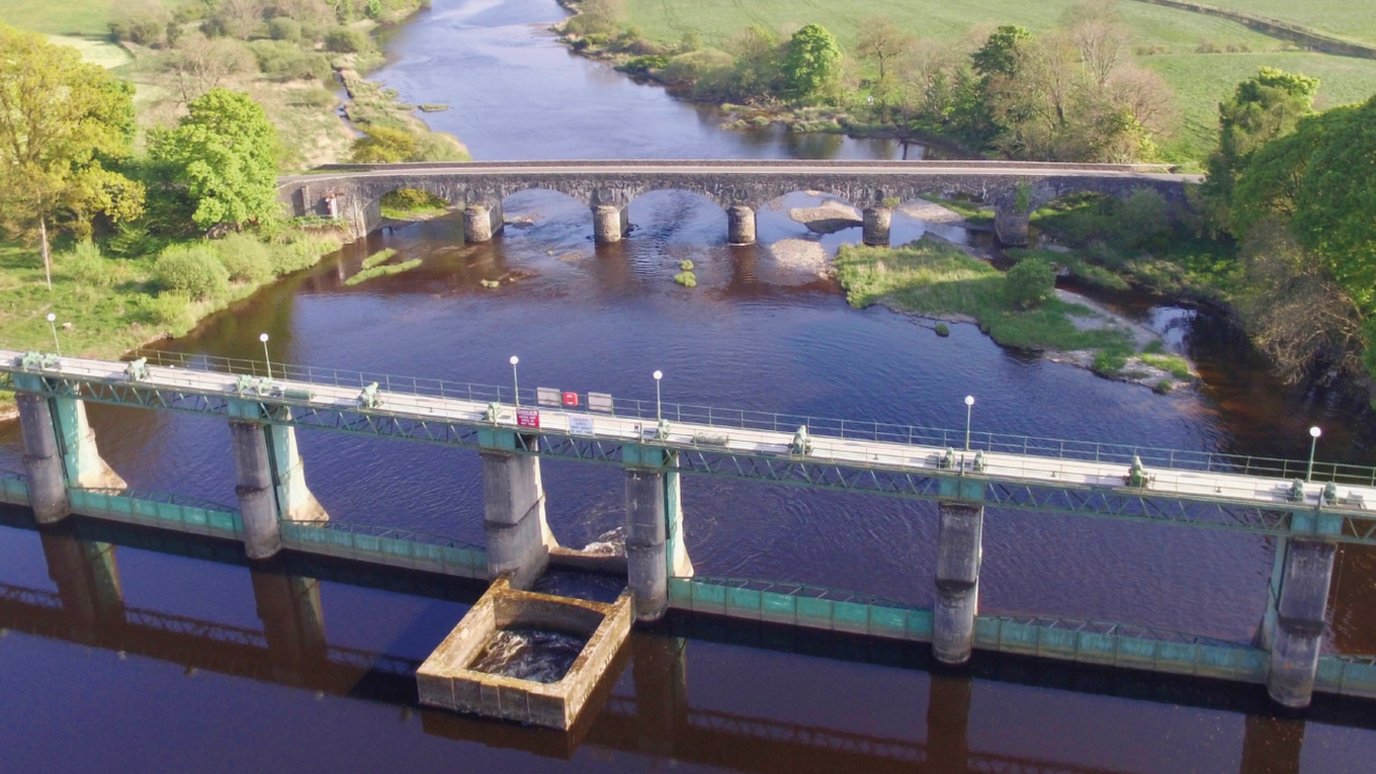The Galloway hydro energy scheme that moved a castle
- Published
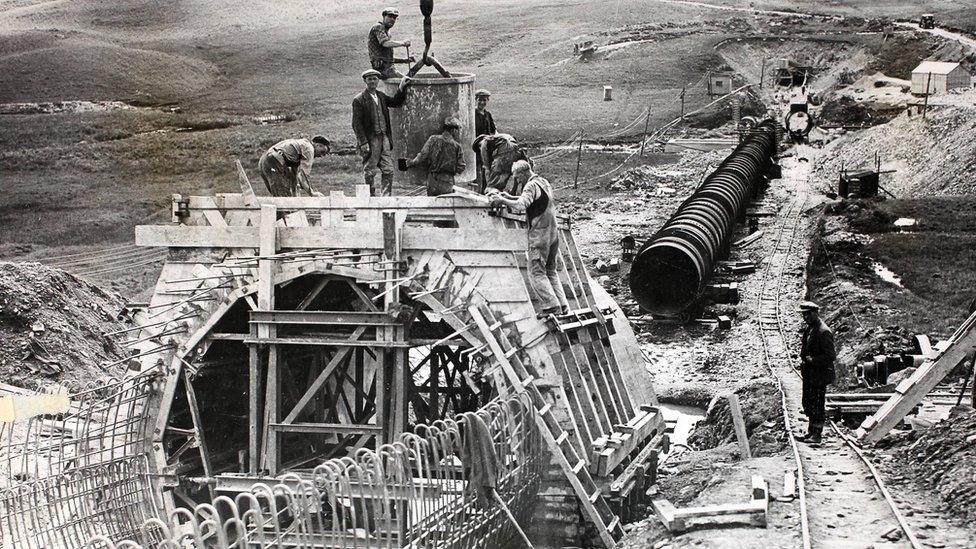
More than 1,500 people worked on the Galloway Hydro Scheme in the 1930s
The rivers of south west Scotland have been helping to meet the nation's energy demands for more than 80 years.
At the peak of its construction in the 1930s, the Galloway Hydro Scheme was of such scale that it provided work for more than 1,500 people.
Now a special event is being held to look at its story, external - from those early days to its continued operation today.
Where is it?
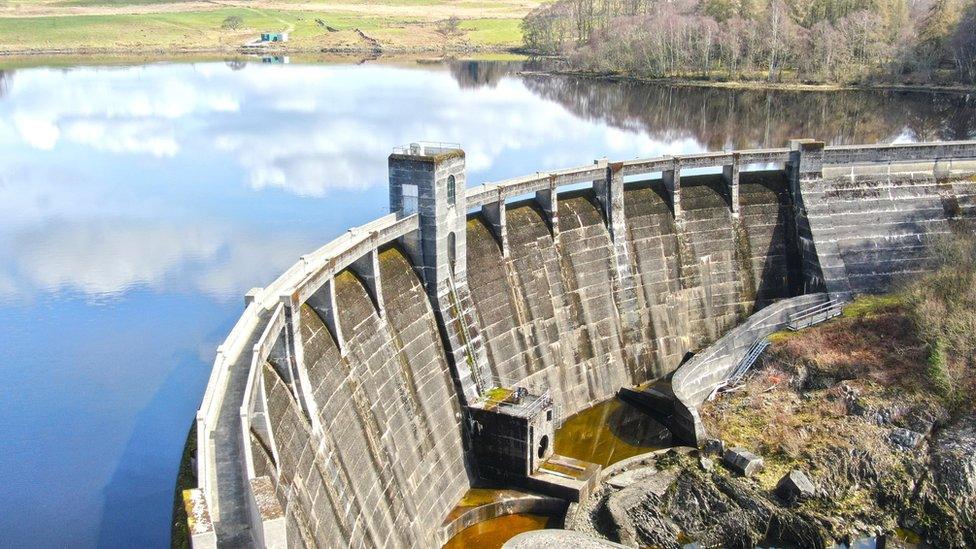
A number of dams are dotted along the route of the scheme
The Galloway Hydro Scheme - now operated by Drax - was built to capture the power of the Ken/Dee river system in south west Scotland.
It was originally made up of five power stations - with a sixth added in the 1980s - along with eight dams, a large barrage gate and a series of pipelines, aqueducts and tunnels to control the flow of the water.

One of the first "all river" hydro schemes in the world, it runs from Loch Doon in the north to Tongland in the south with the capacity to generate more than 100MW of electricity.
That far exceeded local demand - until moves to create a national grid in the 1920s unlocked the opportunity to send supplies much further afield.
'Significant impact'
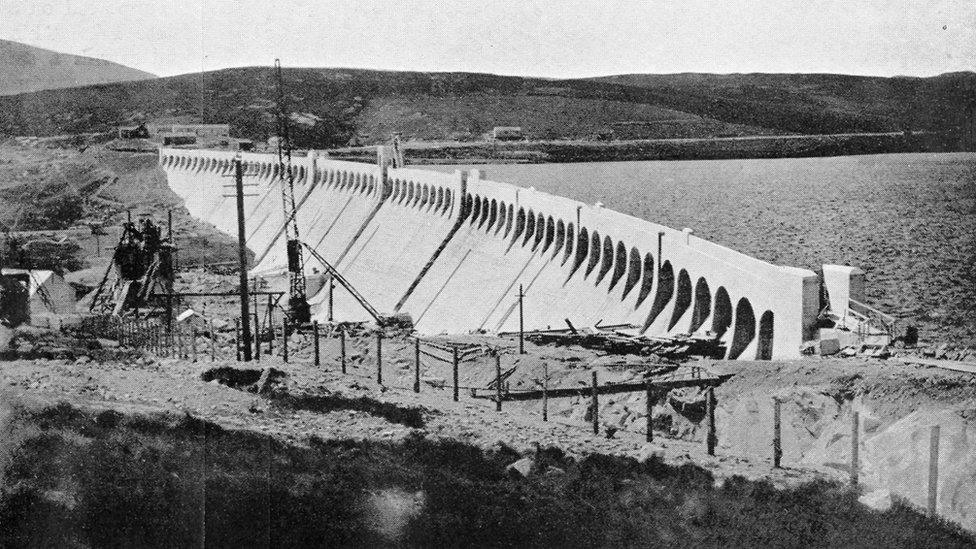
A number of concerns were raised about the project before it began
Claire Williamson, senior archaeologist at Rathmell Archaeology, has been researching the social and cultural impact of the scheme as part of the wider Galloway Glens project., external
She said it made a "significant impact" - not only on the physical landscape but also the lives of the people in the area.
Not everyone was keen to see construction begin in the early 1930s.
"There was a big list of opposition - the issues included fishing, aesthetics, coal interests, antiquities, industries and community interests," she said.
Castle move

Loch Doon Castle was moved stone by stone to allow the scheme to proceed
Another concern was the fate of Loch Doon castle.
"The castle sat in the middle of the loch - but when they were raising the water levels it was going to partially submerge it," explained Ms Williamson.
"But, because of public outcry, they stone by stone moved this castle from the loch and put it on the land just at the side of it.
"They completely rebuilt the castle."
Dangerous work

A number of people lost their lives while working on the project
A construction project of such scale was also a dangerous one.
Ms Williamson said that over a six-month period in 1933, five men died and 16 were seriously injured - many of them while building a massive tunnel at Glenlee.
A memorial plaque still stands in honour of those who lost their lives over the five years of the construction scheme.
Although the workers were meant to be from Galloway, many came in from outside the area.

Workers lived in camps along the route of the scheme during construction
"They were supposed to have an obligation that they were mostly employing local labour," said Ms Williamson.
"But, of course, it was the 1930s so it was during the Great Depression so labour exchanges all over the country were prompting the unemployed to go to Galloway to get work."
They lived in camps along the route of the work and one man did more than most to make it more bearable - the memorably-named Rev Thomas P Hitman.
"He seems to have done a lot," said Ms Williamson. It included organising services, concerts, games and even football matches.
"He would use public transport and cycling initially to travel around the camps," she said.
However, when his weekly travelling passed more than 150 miles the local presbytery eventually gave him a motorbike to help carry out his work.
Turning point
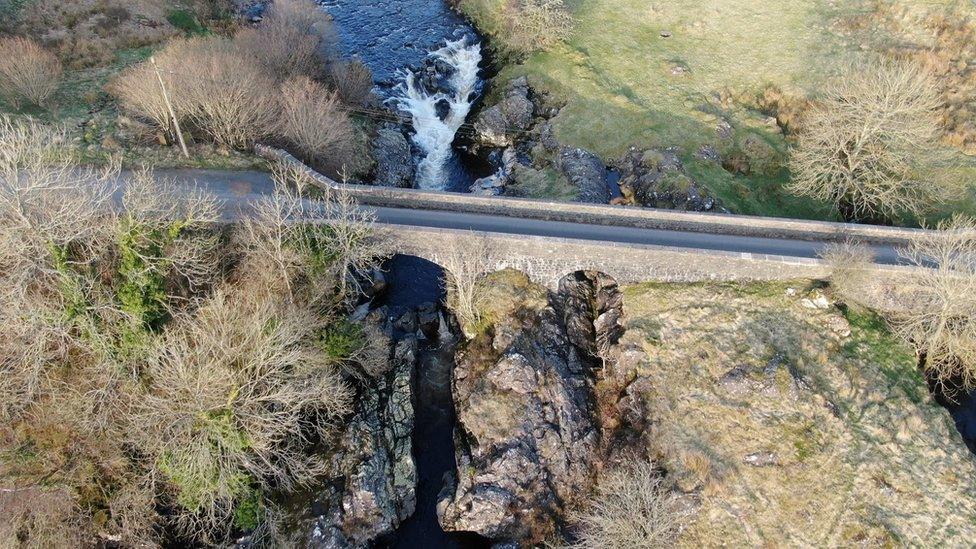
The Galloway scheme was "influential" on future hydro energy schemes
Following completion, local reservations still remained about the scheme but that began to change slowly.
Ms Williamson said it appeared to take some time before the "turning point" and it began to "win people over".
"It definitely does seem to be something they are quite proud of now - the hydro scheme," she said.
"All of the buildings, all the power stations and all the dams are listed buildings."

The "high quality" design of sites like Tongland has been praised by Historic Environment Scotland
Historic Environment Scotland has described it as "influential" on the development of hydropower in Scotland.
It has also praised the "high quality design of both power stations and dams which characterises the Galloway scheme".
Major overhaul
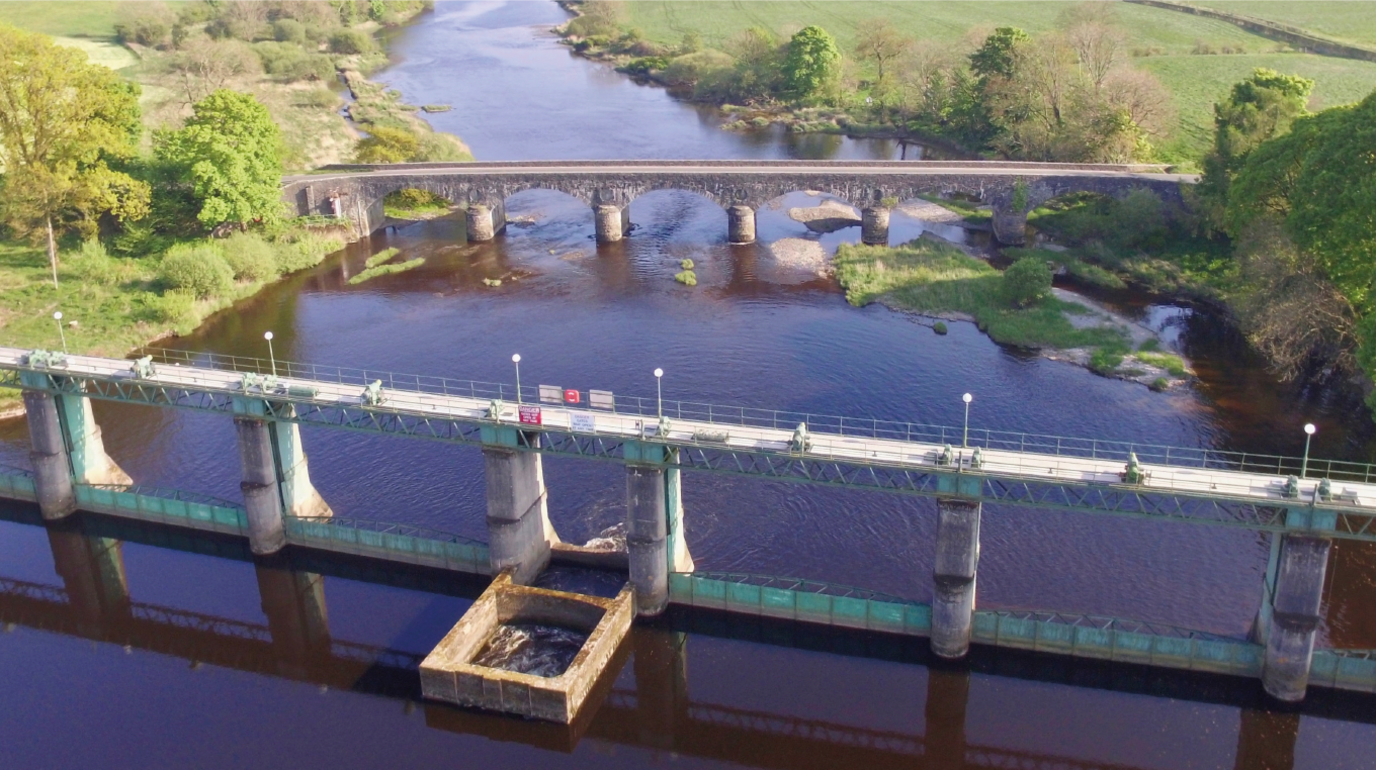
A major upgrade of the Glenlochar Barrage was announced last year
At its launch the scheme employed more than 90 people but advances in technology mean that today it is fewer than 30.
Stuart Ferns, Drax's Galloway Hydro Scheme operations manager, said it could provide enough renewable electricity for about 218,000 homes.
"With the world facing a climate emergency, the green energy generated from Galloway's rivers has never been more important," he added.
Last year the company announced a major overhaul for one part of the scheme with plans to spend nearly £6m on the Glenlochar Barrage.
Mr Ferns said that would help to ensure the historic power stations could continue to play an important role for many years to come.
All images are copyrighted.
Related topics
- Published7 October 2020
